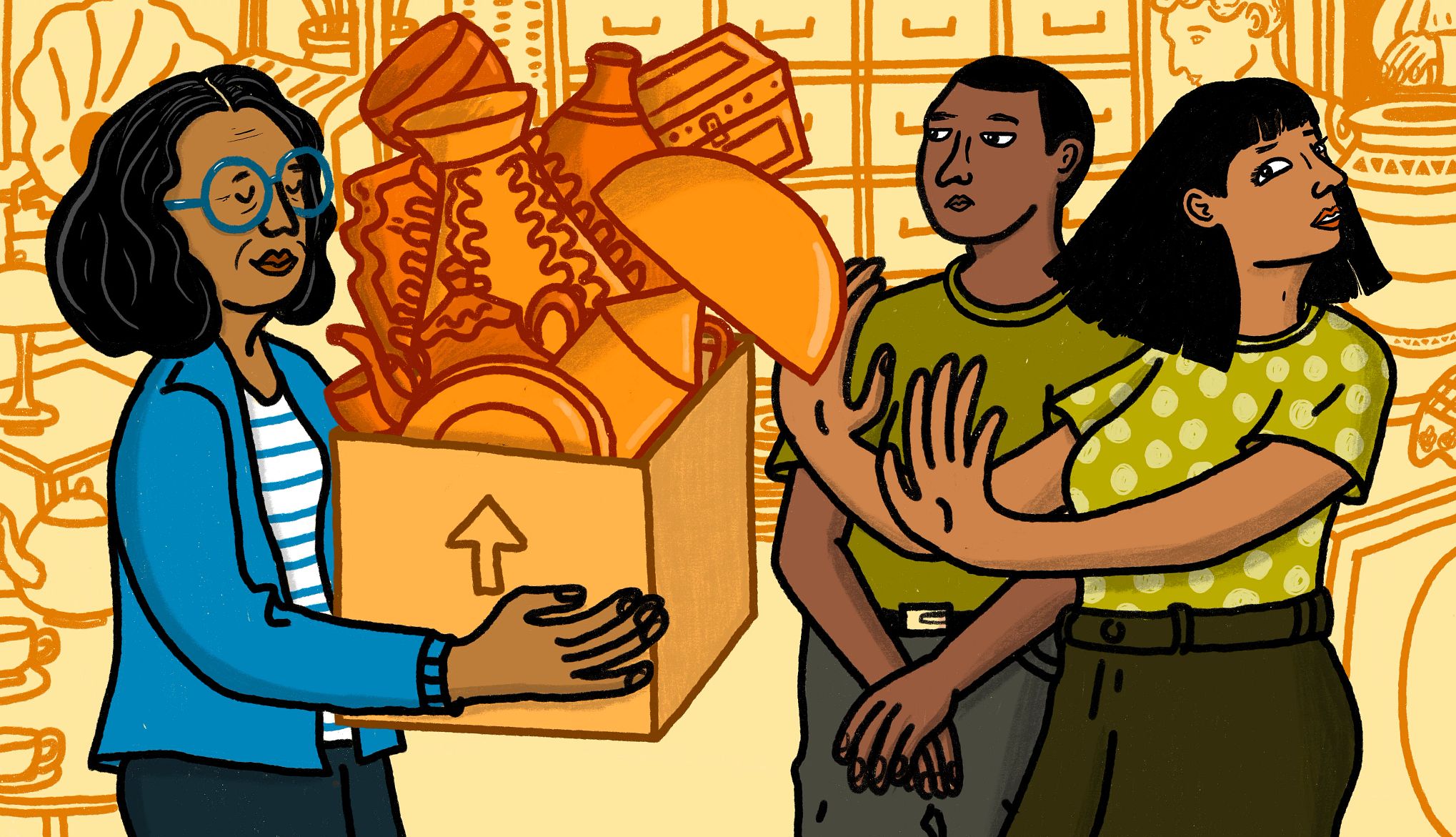
Sell Your Collectibles Your Kids Don’t Want to Inherit
- Select a language for the TTS:
- UK English Female
- UK English Male
- US English Female
- US English Male
- Australian Female
- Australian Male
- Language selected: (auto detect) - EN
Play all audios:

Paul Schmid, 81, began collecting stamps with his father as a kid and has since accumulated a slew of other collectibles, including 150 Bakelite pencil sharpeners, thousands of picture
postcards and 100 character flashlights (rare 1939 Walt Disney Silly Symphonies and 1950s space flight themes are some of his favorites). But recently he’s been facing the reality that his
sons “never caught the collecting bug.” While he’s enjoyed the hobby, Schmid says he doesn’t want to burden his kids with his collectibles when he dies. So the retired stamp dealer, who
lives in Huntington, New York, has been slowly selling items, like a Pogo character collection he sold at auction on eBay — for $25,000. Planning for your collection’s future is an important
step, especially if you know that your kids don’t want to inherit your keepsakes. And since you’re the one who built the collection, you’re in the best position to make informed decisions
about selling it, says Ken Farrell, 75, owner of Just Kids Nostalgia in Huntington, New York, who specializes in popular culture collections from the 1930s to the 1980s. Ken Farrell, owner
of Just Kids Nostalgia in Huntington, New York, specializes in selling popular culture collections from the 1930s to the 1980s. Rick Kopstein A good time to sell a collection is when you’ve
stopped deriving enjoyment from it, says David Coogle, cochairman of Daniel F. Kelleher Auctions, LLC, in Danbury, Connecticut, adding that most of his clients have kids who don’t want
their collectibles. Selling your collection could also help you fund a grandchild’s college education or achieve other goals. “Wouldn’t it be better to leave a legacy rather than a problem,
because you’re going to leave this collection to someone who knows nothing about it, probably doesn’t even enjoy it, and then to try to have them be responsible for getting a fair price?”
says Coogle, 62, a collector and trader in stamps, coins, banknotes and historical documents. Another reason to sell collections before you pass: Your children could discard the items
without realizing their value, warns Robert Friedman, 80, owner of Dr. Robert Friedman and Sons Stamp Company in Woodridge, Illinois. That’s not to say it’s easy to let go. Selling a
collection you’ve spent decades building can feel “like selling one of your children, because that collection has grown up with you,” Coogle says. “But you don’t want to hang on to it so
long that someone else in your family is willing to throw it away just to get rid of it.” Once you’ve decided to let go of all or part of your collection — there’s no reason you can’t hold
on to some pieces, especially ones that you know your kids will appreciate — the next step is entering the marketplace. You could sell the items yourself or work with a knowledgeable dealer.
The route you choose largely depends on how much money you hope to make and how much work you want to put in, says Farrell. Take these five steps to sell collectibles that your kids don’t
want to inherit. 1. GET ORGANIZED Start by assessing what you have. Taking an inventory can help you get a sense of each piece’s value, says Jenny Pitman, director of regions at Doyle
Auctioneers & Appraisers in New York City. That entails gathering up any bills of sale, receipts and auction records. “A lot of collectors have been very detailed in their purchases,”
Pitman says. Coogle says compiling this information is particularly important if you decide to work with a dealer or an auction house, because they can use it to verify the piece’s
authenticity.
